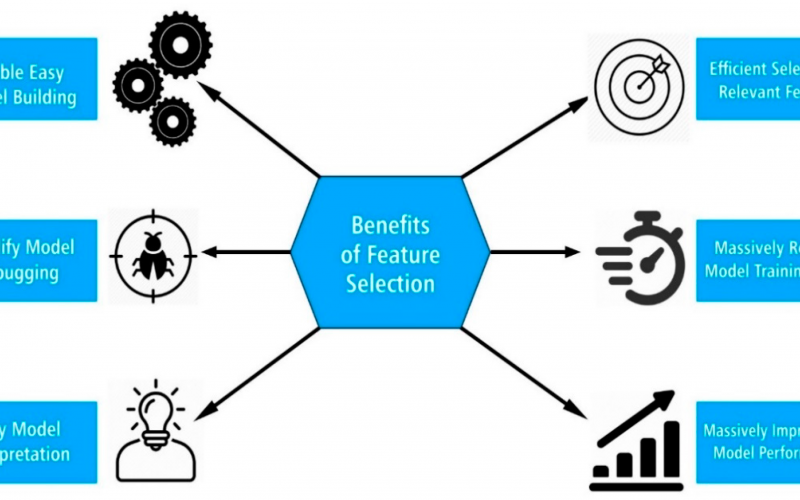Feature engineering and feature selection are crucial steps in machine learning that involve transforming raw data into meaningful and informative features to improve the performance and efficiency of models. Here’s an overview of feature engineering techniques and feature selection methods:
Feature Engineering Techniques:
- Imputation: Handle missing values by imputing them with appropriate values, such as mean, median, or using more advanced techniques like regression-based imputation or k-nearest neighbors imputation.
- One-Hot Encoding: Convert categorical variables into binary vectors, where each category becomes a separate binary feature. This enables the inclusion of categorical data in machine learning models.
- Scaling and Normalization: Scale numerical features to a common range (e.g., 0 to 1) or standardize them to have zero mean and unit variance. This ensures that features with different scales contribute equally to the model.
- Binning: Group continuous numerical features into bins or intervals to convert them into categorical variables. This can help capture non-linear relationships and handle outliers.
- Polynomial Features: Create new features by combining existing features using polynomial transformations. This can capture non-linear relationships between variables.
- Feature Interaction: Create new features by combining or interacting multiple existing features. For example, multiplying age and income to capture the interaction effect.
- Time-Series Features: Extract relevant features from time-series data, such as lagged values, moving averages, or trend indicators, to capture temporal patterns.
- Textual Feature Extraction: Convert text data into numerical features using techniques like bag-of-words, TF-IDF, word embeddings (e.g., Word2Vec or GloVe), or pre-trained language models (e.g., BERT or GPT).
Feature Selection Methods:
- Univariate Selection: Select features based on their individual relationship with the target variable. Common techniques include chi-square test, ANOVA, or mutual information.
- Recursive Feature Elimination (RFE): Start with all features, train the model, and iteratively eliminate the least important features based on their importance or coefficients. This process continues until a desired number of features is reached.
- Feature Importance: Use models that provide a measure of feature importance, such as decision trees or ensemble methods like random forest or gradient boosting. Features with high importance scores are selected.
- L1 Regularization (Lasso): Apply L1 regularization to linear models, which penalizes the absolute values of coefficients. This leads to sparse solutions, where irrelevant or redundant features have zero coefficients.
- Principal Component Analysis (PCA): Transform the original features into a reduced set of uncorrelated principal components that capture the maximum variance in the data. This can help eliminate multicollinearity and reduce dimensionality.
- Forward/Backward Selection: Starting with an empty or full set of features, iteratively add or remove features based on their impact on model performance, using techniques such as stepwise regression.
- Correlation Analysis: Identify highly correlated features and select a representative subset. Highly correlated features may provide redundant information, and selecting one feature from each group can improve model interpretability and reduce overfitting.
- Embedded Methods: Some models have built-in feature selection mechanisms. For example, regularization techniques like L1 regularization in linear regression or tree-based models that perform automatic feature selection during training.
It’s important to note that the choice of feature engineering techniques and feature selection methods depends on the specific problem, dataset characteristics, and the chosen machine learning algorithm. It often involves iterative experimentation and evaluation to find the most effective combination of features for the given task.
SHARE
